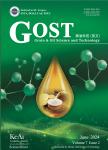Enzymatic preparation of mono-and diacylglycerols:A review
作者机构:School of Food ScienceGuangdong Pharmaceutical UniversityZhongshan 528458China College of Food Science and TechnologyHenan University of TechnologyZhengzhou 450001China Wilmar(Shanghai)Biotechnology Research and Development Center Ltd.Pudong New DistrictShanghai 200137China
出 版 物:《Grain & Oil Science and Technology》 (粮油科技(英文版))
年 卷 期:2023年第6卷第4期
页 面:185-205页
核心收录:
学科分类:0832[工学-食品科学与工程(可授工学、农学学位)] 08[工学] 083201[工学-食品科学]
基 金:supported by the National Natural Science Foundation of China(31772000)
主 题:Monoacylglycerol Diacylglycerol Enzymatic production Esterification Glycerolysis Tert-butanol Ionic liquids Patent evaluation
摘 要:Monoacylglycerols(MAGs) and diacylglycerols(DAGs) are partial glycerides widely used in food industry. They are safe and non-toxic food emulsifiers, especially for MAGs. MAGs account for approximately 75% of the total emulsifiers in food industry worldwide. DAGs are recognized as functional cooking oils, they can suppress body fat accumulation and postprandial serum triacylglycerols(TAGs) level. The traditional production of MAGs and DAGs is based on the chemical method, which requires high reaction temperature usually up to 200–260 ℃. Such high temperature is not suitable for oil containing heat sensitive polyunsaturated fatty acids. Enzymatic approach has been received increasing attentions. Enzymatic production of partial glycerides to replace chemical processes has been in industry, particularly for DAGs production as the products have been claimed as a functional and nutritional oil. Enzyme technology for the processing of oils and fats has been moved to industry step by step and case by case during the last 20 years. More and more applications are particularly moving into bulky oils and fats processing. At the same time, the cost of enzymes as a commercial product is reducing steadily. This review summarized the recent 15 years advances on the the enzymatic preparation of MAGs and DAGs. The critical process parameters under different reaction routes were presented and emphasized. The reaction media not only increased the homogeneity of the reaction system, but also shifted the reaction equilibrium towards the target product generation, and this part was stated in detail. In addition, the patent evaluation was included, and the application of MAGs and DAGs was covered.



